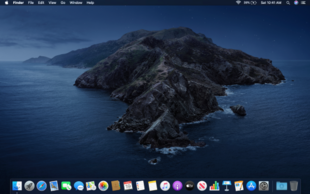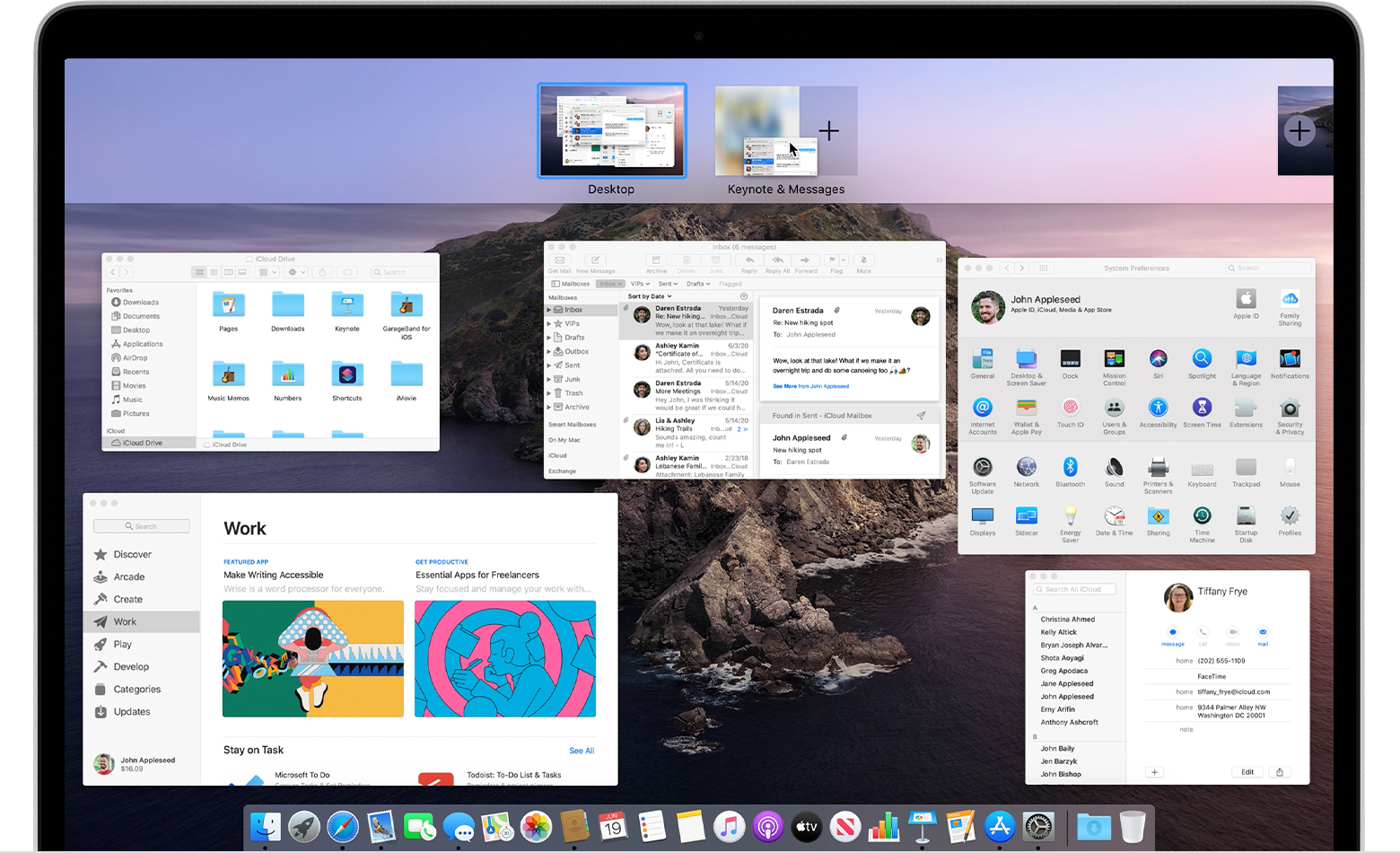The Dropbox desktop app for Linux computers
- Recent Mac Operating Systems Installation
- Mac Latest Operating Systems Versions
- List Of Recent Mac Operating Systems
- Recent Mac Operating Systems Manual
- The usage share of operating systems is the percentage of computing devices that run each operating system (OS) at any particular time. All such figures are necessarily estimates because data about operating system share is difficult to obtain; there are few reliable primary sources – and no agreed methodologies for its collection.
- These are all Mac operating systems, starting with the most recent. When a major new macOS is released, it gets a new name, such as macOS Big Sur. As updates that change the macOS version number become available, this article is updated to show the latest version of that macOS.
MacOS (formerly 'Mac OS X' and later 'OS X') is a line of open core graphical operating systems developed, marketed, and sold by Apple Inc., the latest of which is pre-loaded on all currently shipping Macintosh computers. MacOS is the successor to the original classic Mac OS, which had been Apple's primary operating system since 1984. About supported operating systems - We provide support for and recommend using the following devices: Android running OS 4.0.3 and newer iPhone running iOS 10 and newer Select phones running KaiOS 2.5.1 newer, including JioPhone and JioPhone 2 Once you have one of these devices, install WhatsApp and register your phone number. WhatsApp can only be activated with one phone number on one device.
Essential requirements for Linux
If you’re computer is running Linux, and you want to run the Dropbox app, you need to use:
- Ubuntu 14.04 or later
- Fedora 21 or later
- Glibc 2.19 or later
- The latest Dropbox app for Linux
- A Dropbox folder on a hard drive or partition formatted with one the following file system types:
- ext4
- zfs (on 64-bit systems only)
- eCryptFS (back by ext4)
- xfs (on 64-bit systems only)
- btrfs
Notes:
- If your device doesn’t meet the operating system requirements, you may still be able to use the Dropbox desktop application, but results may vary.
- If you experience an issue and contact Dropbox support without the correct system requirements for Linux, you will be asked to use the correct system requirements.
- Dropbox doesn’t support ARM processors for Linux.
The full Dropbox app on Linux
In addition, if you’d like to get the full Dropbox desktop app, you need to use:
- A computer capable of running the required operating system, and one of the following desktop environments:
- GNOME shell (may need the TopIcons extension to get the tray icon)
- Unity
- GNOME Classic
- XFCE with the corresponding Nautilus dependencies
- These additional requirements, when applicable:
- GTK 2.24 or later
- Glib 2.40 or later
- Libappindicator 12.10 or later
- Nautilus 3.10.1 or later
The headless Dropbox app on Linux
If you’d like to run the Dropbox app “headless” (using the command line only), you only need the Dropbox app essential requirements. Then you can install the app and use the Linux Command Line Interface (CLI) to control the desktop app.
macOS Big Sur elevates the most advanced desktop operating system in the world to a new level of power and beauty. Experience Mac to the fullest with a refined new design. Enjoy the biggest Safari update ever. Discover new features for Maps and Messages. And get even more transparency around your privacy.
Check compatibility
macOS Big Sur is compatible with these computers:
MacBook introduced in 2015 or later
MacBook Air introduced in 2013 or later
MacBook Pro introduced in late 2013 or later
Mac mini introduced in 2014 or later
iMac introduced in 2014 or later
iMac Pro
Mac Pro introduced in 2013 or later
View the complete list of compatible computers.
If upgrading from macOS Sierra or later, macOS Big Sur requires 35.5GB of available storage to upgrade. If upgrading from an earlier release, macOS Big Sur requires up to 44.5GB of available storage. To upgrade from OS X Mountain Lion, first upgrade to OS X El Capitan, then upgrade to macOS Big Sur.

Make a backup
Before installing any upgrade, it’s a good idea to back up your Mac. Time Machine makes it simple, and other backup methods are also available. Learn how to back up your Mac.
Recent Mac Operating Systems Installation
Get connected
Mac Latest Operating Systems Versions
It takes time to download and install macOS, so make sure that you have a reliable Internet connection. If you're using a Mac notebook computer, plug it into AC power.
Download macOS Big Sur
If you're using macOS Mojave or later, get macOS Big Sur via Software Update: Choose Apple menu > System Preferences, then click Software Update.
Or use this link to open the macOS Big Sur page on the App Store: Get macOS Big Sur. Then click the Get button or iCloud download icon.
Begin installation
After downloading, the installer opens automatically.
Click Continue and follow the onscreen instructions. You might find it easiest to begin installation in the evening so that it can complete overnight, if needed.
If the installer asks for permission to install a helper tool, enter the administrator name and password that you use to log in to your Mac, then click Add Helper.
Allow installation to complete
Please allow installation to complete without putting your Mac to sleep or closing its lid. Your Mac might restart, show a progress bar, or show a blank screen several times as it installs both macOS and related updates to your Mac firmware.
Stay up to date
After installing macOS Big Sur, you will be notified when updates to macOS Big Sur are available. You can also use Software Update to check for updates: Choose Apple menu > System Preferences, then click Software Update.
List Of Recent Mac Operating Systems
Or get macOS Big Sur automatically
If you're using OS X El Capitan v10.11.5 or later and your App Store preferences or Software Update preferences are set to download new updates when available, macOS Big Sur will download conveniently in the background, making it even easier to upgrade. A notification will inform you when macOS Big Sur is ready to be installed. Click Install to get started, or dismiss the notification to install later. When you're ready to install, just open the file named Install macOS Big Sur from your Applications folder.



Learn more
Recent Mac Operating Systems Manual
- If the installer shows a list of apps that are not optimized for your Mac, learn about 32-bit app compatibility, then choose whether to proceed with the installation.
- For the strongest security and latest features, upgrade to macOS Big Sur. If you have hardware or software that isn't compatible with Big Sur, you might be able to install an earlier macOS.
- You can also use macOS Recovery to reinstall the macOS you're using now, upgrade to the latest compatible macOS, or install the macOS that came with your Mac.
